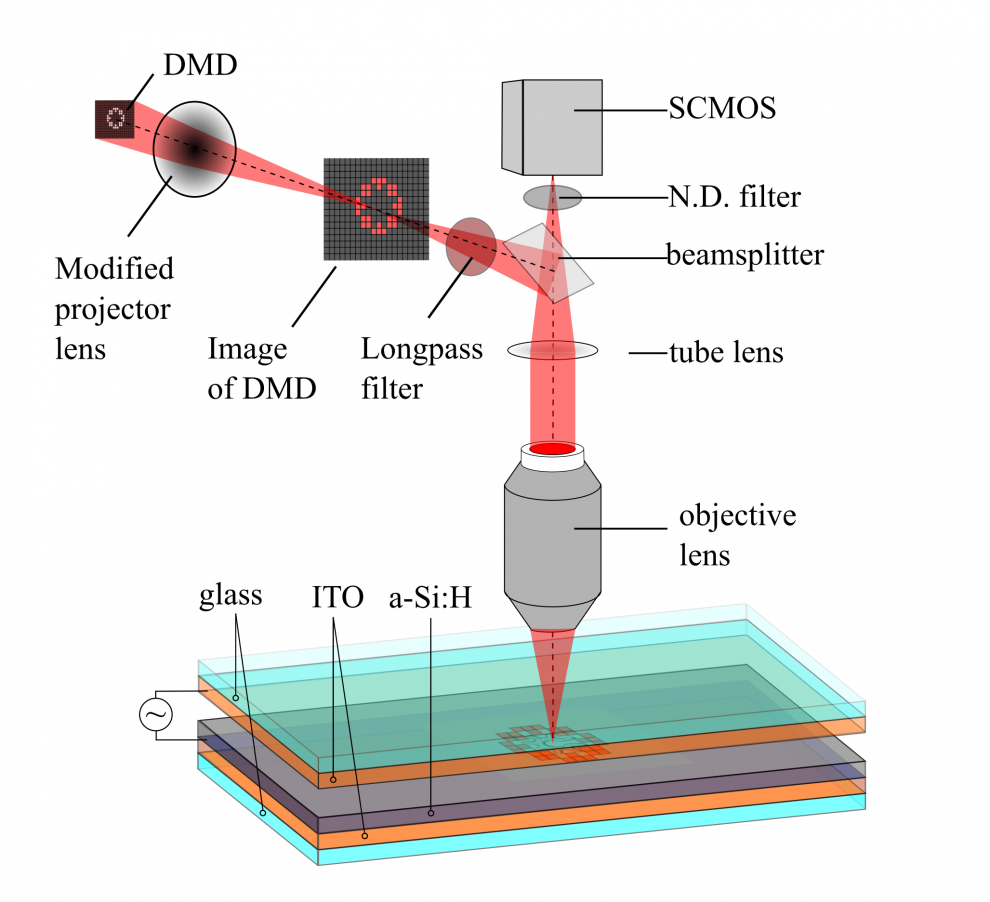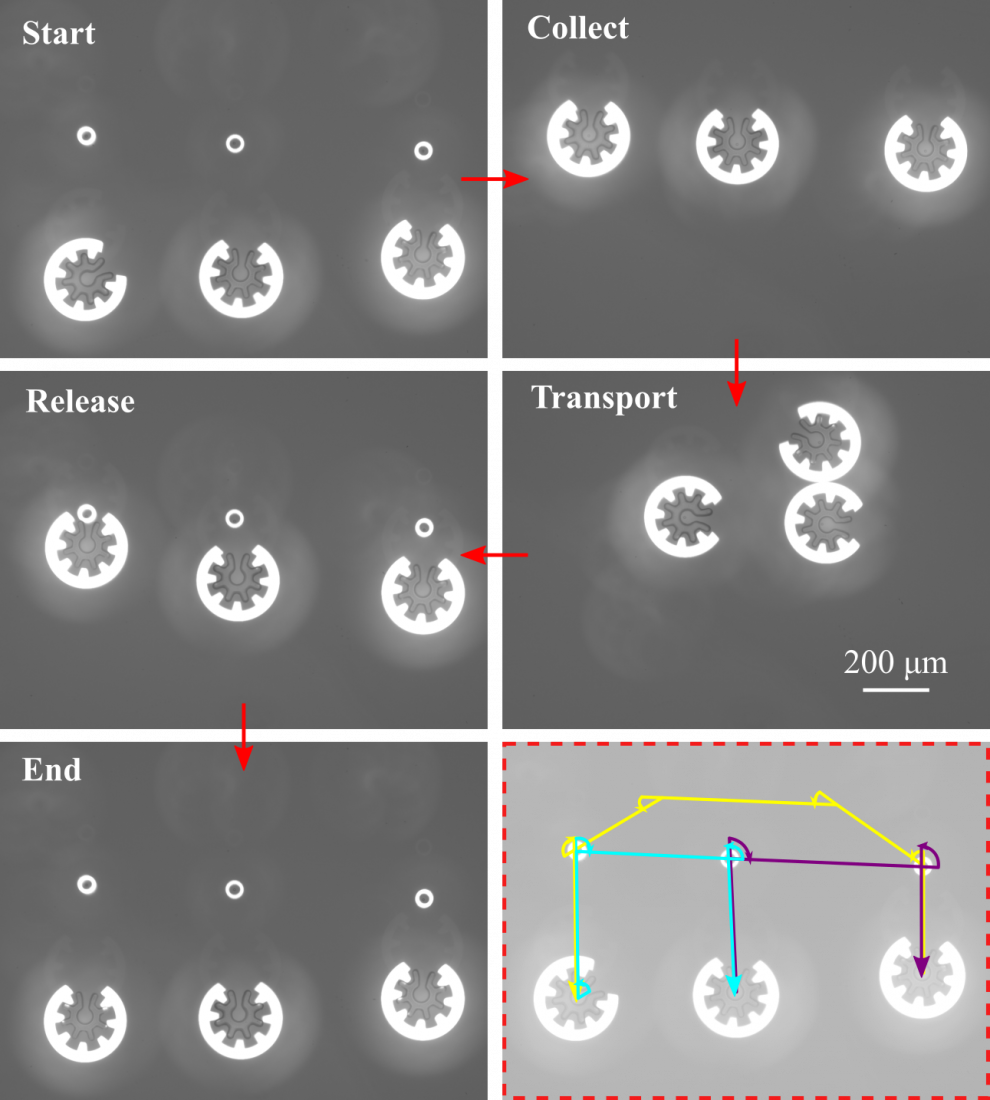Optoelectronic tweezers (OET) is a micromanipulation technology based on the use of light to control the dielectrophoretic (DEP) forces experienced by objects in a non-uniform electric field.
A typical OET device is formed from a pair of parallel plate electrodes, one of which is transparent and the other coated with a photoconductive layer (PC). Illuminating part of the PC layer increases the local electrical conductivity, introducing a gradient in the electric field in the liquid medium above the dark and illuminated regions when an external potential is applied. As a result, objects are attracted to or repelled from illuminated regions of the substrate, depending on the applied field and the properties of the object and the fluid.

OET driven microrobots (OETdMs) are small (~200 μm-sized) objects which have been designed for control using OET. In the TouchLab we are working with the Wheeler Microfluidics laboratory at the University of Toronto to develop methods to automate the control and operation of OETdMs1 for collection of rare therapeutic stem cells from dissociated neural tissues. Using computer vision, multi-agent task allocation and path planning and a variety of control methods we aim to enable autonomous operation of groups of microrobots2. We believe our work has potential to significantly increase the speed and flexibility of OETdMs for a variety of tasks.

1https://doi.org/10.1073/pnas.1903406116
2https://arxiv.org/abs/2103.04912
 Close
Close

